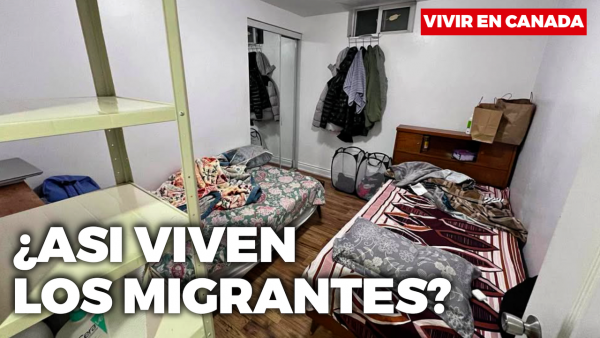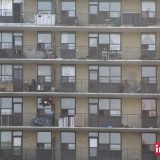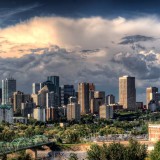Living in Canada – Migrant Living Conditions
Living conditions for immigrants in Canada

I start with the question: How do you think life is in Canada? Do you think everyone has houses like the one we are looking at? And if not? How do you think it is? We will address these and other questions throughout this episode, and some surprises at the end of it.
One of the things that really surprised me when I arrived in Vancouver, more than 15 years ago, was that houses were advertised for sale with 10 or 12 bedrooms, two kitchens, 4 living rooms, etc. As we see it in this real estate advertisement today (2025). Shortly thereafter, a real estate agent told me that these houses were known as “Monster Houses” and that they were mainly built by immigrants from India who were and still are used to living in “clans” where several generations share the same house together. with adult children, their respective partners and children, not without missing an uncle, aunt or other relative.
The same real estate agent told me that this was not very well regarded by “white” Canadians and that they frequently went to complain to the municipal authority arguing that these “Monster Houses” were ugly to the neighborhood and damaged its image, but the authority simply ignored them. While in Vancouver, I also learned of cases of undocumented immigrants living in overcrowded apartments. There was a case that even made the news where they had reported that more than 20 Chinese immigrants lived in a 2-bedroom apartment. The complainants were Canadian residents of the same building in question. On this occasion, the police did intervene and evict them, but I don’t know if they deported them or not.
Today, on the streets of Vancouver are hundreds, if not thousands of people living in tents on the streets. However, I would like to highlight that the majority are Canadians with mental health problems, although there are more and more people, without those types of problems, who simply cannot pay the rent or buy a house.
A very illustrative fact that refers to the inaccessibility of housing, tells us, on the one hand, that the average price of a house in Vancouver is $1,172,100 and, to be able to acquire it, a 20% down payment and an annual salary of $213,600 are required. In regards to a monthly rent for a 1-bedroom apartment in Vancouver, BC costs about $2,562 on average, while a 2-bedroom apartment is $3,736.
Now, the situation is not much better in Toronto, but it is somewhat different. What do I mean? Toronto ranks 2nd in housing prices, obviously after Vancouver. In the Toronto area, there are not only “Monster houses” but “Monster neighborhoods”, where the norm are these enormous constructions -where not only several generations of the same family live, but they also rent “rooms” to families with fewer resources or to immigrants. Let’s see, for example, a house that originally had 3 bedrooms and two and a half bathrooms, now they are preparing it to have 4, 5, 6 bedrooms and perhaps an extra bathroom. How do they do it? It turns out that most homes in the Toronto area have a “basement” -where the heating system and the washer and dryer usually go and to store things they do not use frequently, like tools, etc.
Well, it turns out that people “made” more rooms and rented them, without much problem, until fires and other accidents began to happen due to overcrowding. And what did the authority do? They simply changed the regulation and now asks that basements be legal. What does this imply? That they have windows large enough through which, in case of emergency, people can leave. And what has caused all this? Well, simply put, many have been conditioning their basements to rent them out, so now those neighborhoods are packed with people. Many houses were designed for nuclear families, now there are up to 20 people living in a single house. And given the lack of housing and good salaries, many immigrants are living in these overcrowded conditions. Just search Facebook for “Shared accommodation” in the Toronto area, and thousands of ads pop up. It should be noted that the majority of these advertisements are from the same owners of the houses who see a “huge opportunity” to profit from immigrants without anyone regulating them.
Ah, something that should not be ignored about Toronto either, is the fact that like Vancouver, there is a growing number of people who live on the streets, in their cars, in tents or cardboard and that the majority are Canadians with mental health problems and/or unemployed. Although there are also workers who cannot pay rent, much less buy a house.
What do you think of what I have shared with you? What reading do you give it, especially in regards to the supposed quality of life in Canada? Yes, without a doubt, there are those who live well, but there are increasingly more who live in very poor conditions.
Watch video at https://youtu.be/1ANu809sfQE?si=-KJaH7kqAaSzGG3Z




